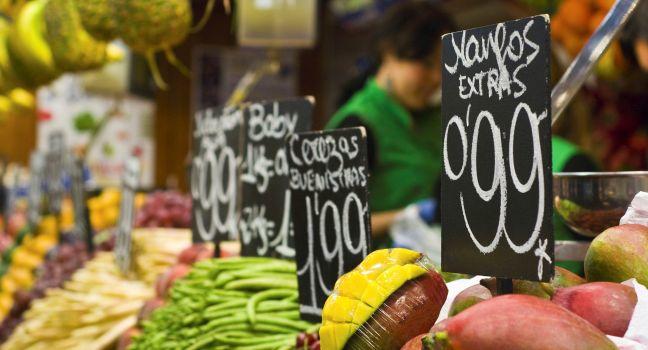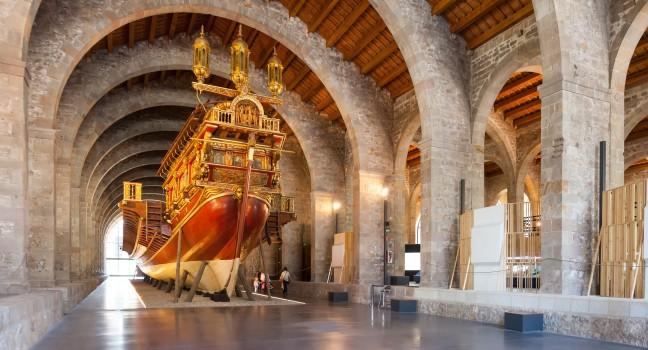Gaudí built this mansion in 1886–90 for textile baron Count Eusebi de Güell Bacigalupi, his most important patron. (The prominent four bars of the senyera, the banner of Catalunya, on the facade between the parabolic arches of the entrance attest to the nationalist fervor the two men shared.) Gaudí's principal obsession in this project was to find a way to illuminate this seven-story house, hemmed in as it is by other buildings in the cramped quarters of El Raval. The dark facade is a dramatic foil for the brilliance of the inside, where spear-shape Art Nouveau columns frame the windows, rising to support a series of detailed and elaborately carved wood ceilings.
The basement stables are famous for the "fungiform" (mushroom-like) columns carrying the weight of the whole building. Note Gaudí's signature parabolic arches between the columns and the way the arches meet overhead, forming a canopy of palm fronds. (The beauty of the construction was probably little consolation to the political prisoners held here during the 1936–39 Civil War.) The patio where the horses were groomed receives light through a skylight, one of many devices Gaudí used to brighten the space. Don't miss the figures of the faithful hounds, with the rings in their mouths for hitching horses, or the wooden bricks laid down in lieu of cobblestones in the entryway upstairs and on the ramp down to the basement grooming area, to deaden the sound of horses' hooves.
Upstairs are three successive receiving rooms; the wooden ceilings are progressively more spectacular in the complexity of their richly molded floral motifs. The room farthest in has a jalousie in the balcony: a double grate through which Güell was able to observe—and eavesdrop on—his arriving guests. The main hall, with the three-story-tall tower reaching up above the roof, was for parties, dances, and receptions. Musicians played from the balcony; the overhead balcony window was for the principal singer. Double doors enclose a chapel of hammered copper with retractable prie-dieu; around the corner is a small organ, the flutes in rectangular tubes climbing the central shaft of the building.
The dining room is dominated by a beautiful mahogany banquet table seating 10, an Art Nouveau fireplace in the shape of a deeply curving horseshoe arch, and walls with floral and animal motifs. From the outside rear terrace, the polished Garraf marble of the main part of the house is exposed; the brick servants' quarters are on the left. The passageway built toward La Rambla was all that came of a plan to buy an intervening property and connect three houses into one grand structure, a scheme that never materialized.
Gaudí is most himself on the roof, where his playful, polychrome ceramic chimneys seem like preludes to later works like the Park Güell and La Pedrera. Look for the flying-bat weather vane over the main chimney, a reference to the Catalan king Jaume I, who brought the house of Aragón to its 13th-century imperial apogee in the Mediterranean. Jaume I's affinity for bats is said to have stemmed from his Mallorca campaign, when, according to one version, he was awakened by a fluttering rat penat (literally, "condemned mouse") in time to stave off a Moorish night attack.





